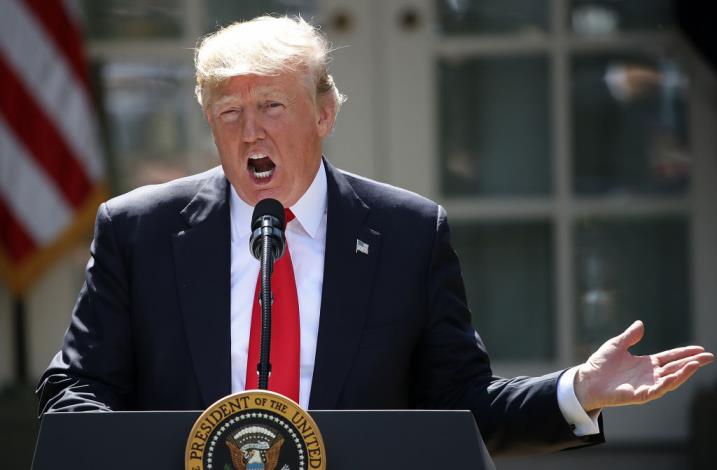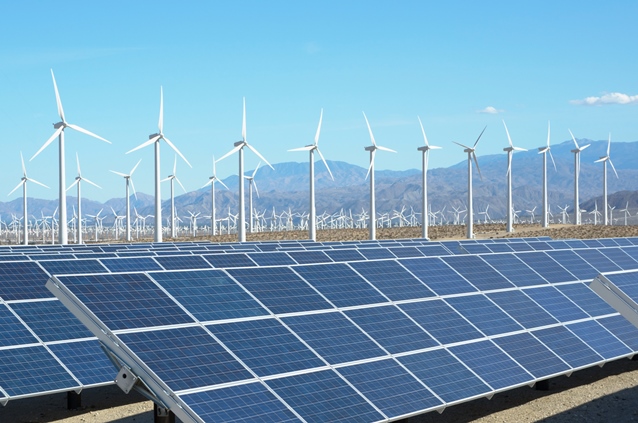
US President Donald Trump announced in June 2017 that the United States would withdraw from the Paris Agreement, but this does not mean that American businesses will suddenly stop developing new technologies and services for the clean energy sector. Hikaru Hiranuma analyzes the impact of the announcement, looking at the fallout from both environmental and economic perspectives.
* * *
—What is the likely fallout from President Donald Trump’s announcement that he is pulling the United States out of the Paris Agreement?
HIKARU HIRANUMA : The United States is the world’s second largest emitter of CO 2 , so there are bound to be serious repercussions were the country to completely abandon its efforts to curb emissions. But that’s not what Trump said; he said he wants to begin negotiations to reenter the Paris accord on terms that are fair to the United States, its businesses, and its people. The idea of new negotiations, though, was immediately rejected by Germany, France, and Italy. The United States is still a party to the UN climate change convention, so how much impact the US withdrawal will actually have on the global environment is as yet unclear.
He’s been denying that climate change is real and insisting on repealing emission curbs since he was a candidate. After entering the White House, though, he’s been rather vague on how he wants to redirect the nation’s environment policy. His choice of secretary of energy, for instance, was Rick Perry, who while governor of Texas turned the state into the country’s largest producer of wind energy. Texas has traditionally been big on natural gas and oil, but it’s been making an effort to turn wind into an energy source that is as cost-competitive as fossil fuels—even without government subsidies. It’s hard to imagine that Trump would force the state to turn its back on these achievements.
—Can we then assume that the clean energy industry would continue to evolve in spite of Trump’s announcement?
HIRANUMA: Yes, I think that’s a fair assumption. Unlike oil, coal, natural gas, and nuclear power, many clean energy sources—particularly renewables—have zero marginal costs. In other words, there’s no cost for fuel, so they should eventually become more price competitive.
The cost of renewable power generation has declined sharply with the expansion of the global clean energy market. The cost of installing a commercial solar power plant, for example, has plummeted by as much as 75 percent since 2010. So using subsidies to promote the shift to renewables is quickly becoming a thing of the past. Clean energy can now compete on its own without government incentives. This is clear from looking at the many Western countries that have liberalized their electricity markets. Fossil fuels are being driven out of the market not just because of environmental concerns but also because they’re losing their cost advantages.
The Economics of Clean Energy
The worldwide clean energy market is expected to grow to around 160 trillion, which is roughly the size of the current global auto market. Businesses see this as a huge opportunity and are scrambling for a piece of the pie. Until quite recently, renewables were viewed as being subject to weather conditions and too unstable to incorporate into the power grid. But we’re seeing great progress in enabling the efficient use of renewables through energy management systems incorporating the latest advances in areas like the internet of things, big data, and artificial intelligence. We’re witnessing the start of the “fourth industrial revolution” (Industry 4.0) in the energy sector.
The key to success in this emerging market will be building smart energy systems that can automatically adjust supply to meet fluctuating demand with a mix of renewable sources, and then taking the expertise gained domestically to the global market. Just because Trump announced the country’s withdrawal from the Paris Agreement doesn’t mean that US businesses will suddenly stop developing the technologies needed to profit from the clean energy revolution.
One industry-level initiative is RE100, in which leading global enterprises, such as Ikea, Starbucks, Wal-Mart, Facebook, and Coca Cola are committing to secure 100% of their purchased electricity from renewable sources. Many of these businesses have developed target dates for achieving this aim; while participation in this framework may partly be to fulfill their corporate social responsibilities, companies no doubt also see the clean energy market as a huge business opportunity.
Clean energy should be a particularly attractive market for Internet firms like Google, which also joined RE100. Solar power, for instance, was kept off the grid until several years ago because output fluctuates according to sunshine levels. But energy supply and demand have become more predictable through the use of IoT, big data, and AI, as I mentioned earlier; by pooling energy supply and demand data from various locations, linking them through the Internet, and centrally controlling power transmission, it should be possible to create a balanced system whereby power can be transferred seamlessly from one area to another. Such a system would present great opportunities for the IT sector.
—Notwithstanding Trump’s announcement, many US governors and mayors have declared that they would continue to honor the pledge to curb emissions. These trends suggest that the impact of Washington’s withdrawal may be limited.
HIRANUMA: Many states are already aggressively promoting clean energy policies, regardless of the political party in power. Of the top 10 producers of wind power, 4 are Republican states and the rest are Democrat. Texas, which is predominantly Republican, is number one, and number two is Iowa, another red state. In terms of solar power, the top 10 is divided evenly between the two parties. The top producer is California, which is solidly Democrat, but this is followed by Arizona and North Carolina, both Republican. Even if the federal government declares its withdrawal, the United States might still meet its Paris emissions pledge thanks to the efforts at the local level.

The people who’ve been actively promoting clean energy will no doubt continue to do so, regardless of what the White House decides. But there’s a need to remain vigilant so that individual states are not forced to abandon the initiatives they’ve taken to date. What if, for example, Trump were to tell Energy Secretary Rick Perry to shut all the wind turbines down? We have to keep in mind that White House policy doesn’t always reflect domestic realities.
—What are Japan’s options going forward?
HIRANUMA: The effort to develop the clean energy industry should definitely continue. We should keep in mind that there are two dimensions to this task. One is the environmental dimension, and the other is economic and market-focused. Most people, it seems to me, are only looking at one side of the issue.
The Intended Nationally Determined Contributions pledged by the parties to the Paris Agreement are not enough to achieve the stated goal of holding the increase in the global average temperature to below 2 degrees Celsius over preindustrial levels—even if all the pledges are fully met and even if the United States remained onboard. National contributions are to be reviewed every five years, so each new target needs to be more ambitious than the one before.
This is the environmental dimension of the clean energy debate. From the viewpoint of developing new markets, on the other hand, Japan and other countries would stand to make big gains were the United States to turn its back on this sector. If GE, Google, and Tesla, for instance, dropped out of the market, other companies would see this as a golden opportunity. But, of course, this isn’t going to happen.
Japan should advance measures from both the environmental and economic perspectives. It should build on the many climate change initiatives it’s been implementing and also bolster its efforts to tap the clean energy market—especially if the United States is going to be shifting directions. Few people appear to be looking at the issue from both sides, but such a balanced approach is what most private businesses would most welcome.
—Given what you’ve said, do we really need the Paris Agreement? Trump’s decision to withdraw was roundly criticized, to be sure, but it’s also been applauded by some, including researchers who have long expressed doubts about global warming.
HIRANUMA: Opinions about the Paris accord will naturally differ depending on the angle from which it’s viewed. Trump established the Strategic and Policy Forum comprising some of America’s top business leaders to advise him on implementing his economic agenda. The forum includes Jack Welch, the former chairman of GE, which is the world’s third-largest producer of wind power; Doug McMillon, president of Wal-Mart Stores, which is committed to raising the share of renewable sources for its electricity use to 50% by 2025; and Elon Musk, a clean energy pioneer who serves as chairman and CEO of Tesla. These members of the president’s forum are fully aware of the huge market potential of clean energy, so I can’t believe that they would endorse America’s withdrawal from the Paris Agreement. Musk, in fact resigned from the panel following Trump’s announcement.
A prominent US think tank whose research findings provided the basis for Trump’s decision clearly looks at the issue from a different vantage point. The views of such climate contrarians are fundamentally at odds with most signatories to the Paris Agreement, who recognize global warming to be a scientific fact. So the perceived importance of the pact will differ according to one’s position and viewpoint.
Developing Country Participation
The fact is, if the agreement were really unnecessary, negotiators from countries around the world wouldn’t have worked so hard to achieve it. Because the initial national pledges are not enough to achieve the 2 degree goal, the parties will be setting increasingly ambitious emission curb targets every five years. The agreement as it stands now may not be a true indicator of its value, and only time will tell whether the agreement will have been effective in slowing down global warming. The coordinated, worldwide response to global warming has only just begun.
The United States never ratified the Kyoto Protocol, and Australia, another Annex 1 country, didn’t do so until a decade after the agreement was signed. The Paris accord, on the other hand, is the first international agreement in which both developed and developing countries have come together to implement shared solutions. It may not be perfect, but it’s a good beginning. The United States has rejected both pacts, but it should be noted that we’re living in a vastly different world today from the days of the Kyoto Protocol. A clean energy market is expanding, and it will only get bigger in the years to come. Musk is not the only one to leave Trump’s Strategic and Policy Forum; Travis Kalanick of Uber Technologies and Bob Iger of the Walt Disney Company have also left the council, and I wouldn’t be surprised if many more members stepped down due to differences of opinion with the president.
(Interview conducted by the Tokyo Foundation public communications department on June 8, 2017. The original article in Japanese can be read here: https://www.tkfd.or.jp/research/detail.php?id=190)


